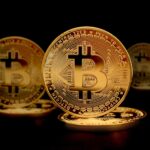The EOS Network Foundation described v0.6.0 as a “game-changer” as it offers “a refreshed DeFi experience, robust technical upgrades, and trustless USDT bridging.”
The EOS EVM, the virtual machine that allows Solidity dapps to run on EOS, has received its biggest upgrade yet. v0.6.0 has been deployed to mainnet, and it brings EOS EVM closer to being available defi The experience the developers always envisioned. There’s a lot to unpack release notes For v0.6.0, but reliable bridging is a major improvement.
happiness of six
In addition to the usual range of technical improvements to the underlying codebase, v0.6.0 has a number of new features, starting with trusted bridging. This enables USDT to be linked to EOS EVMs without any custody risk. The ability to transfer stablecoin value to EOS will make it significantly easier for users to tap into the decentralized finance applications that are beginning to flourish on EVM-compatible chains.
EOS Network Foundation, as the main developer of the chain, Explained In a recent blog post:
“Given the importance of USDT in DeFi, this development is set to increase liquidity as well as Total Value Locked (TVL) on both native EOS and EOS EVM. Although this new feature is currently limited to USDT and EOS, future upgrades are envisioned to include more EOS native tokens.
The other new feature that comes with v0.6.0 is cross-virtual machine communication. This enables smart contracts on the EOS EVM to call EOS natively, allowing Solidity developers to tap into the existing EOS ecosystem and extend their capabilities across the EVM chain. For example, a smart contract on the EVM chain can be triggered based on an event on the parent chain such as a user having a certain EOS token balance.
A game-changer for DeFi on EOS
EOS Network Foundation describes v0.6.0 as a “game-changer” Offering “A Refreshing DeFi Experience, Strong Technical Upgrades, and Trustless USDT Bridging”. In addition to the ability to build bridges USDT, the average user cannot appreciate most of the improvements at this time. Nevertheless, developers should build on EOS EVM, and it is their efforts that will be instrumental in bringing more users into the EOS ecosystem.
The idea behind the EOS EVM was to first open up EOS to Ethereum developers and users, allowing them to utilize the high throughput and low latency of the EOS network when deploying smart contracts written for the EVM. With a low-fee environment and better scalability, EOS has a lot to offer, especially for developers tired of Ethereum’s erratic network costs.
The challenge for the EOS community is reaching the critical mass that will see DeFi flourish. The ability to connect USDT to the EVM chain will be critical in bringing this vision closer to reality. If the initiative proves successful, the platform is set to make other ERC20 tokens available for bridging in a similar manner.

Please check out the latest news, expert commentary, and industry insights from CoinSpeaker contributors.
Bitcoin Crypto Related Post
















